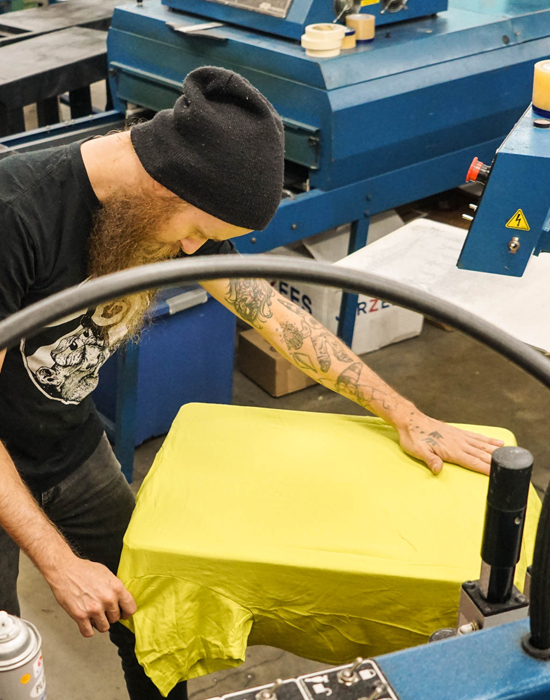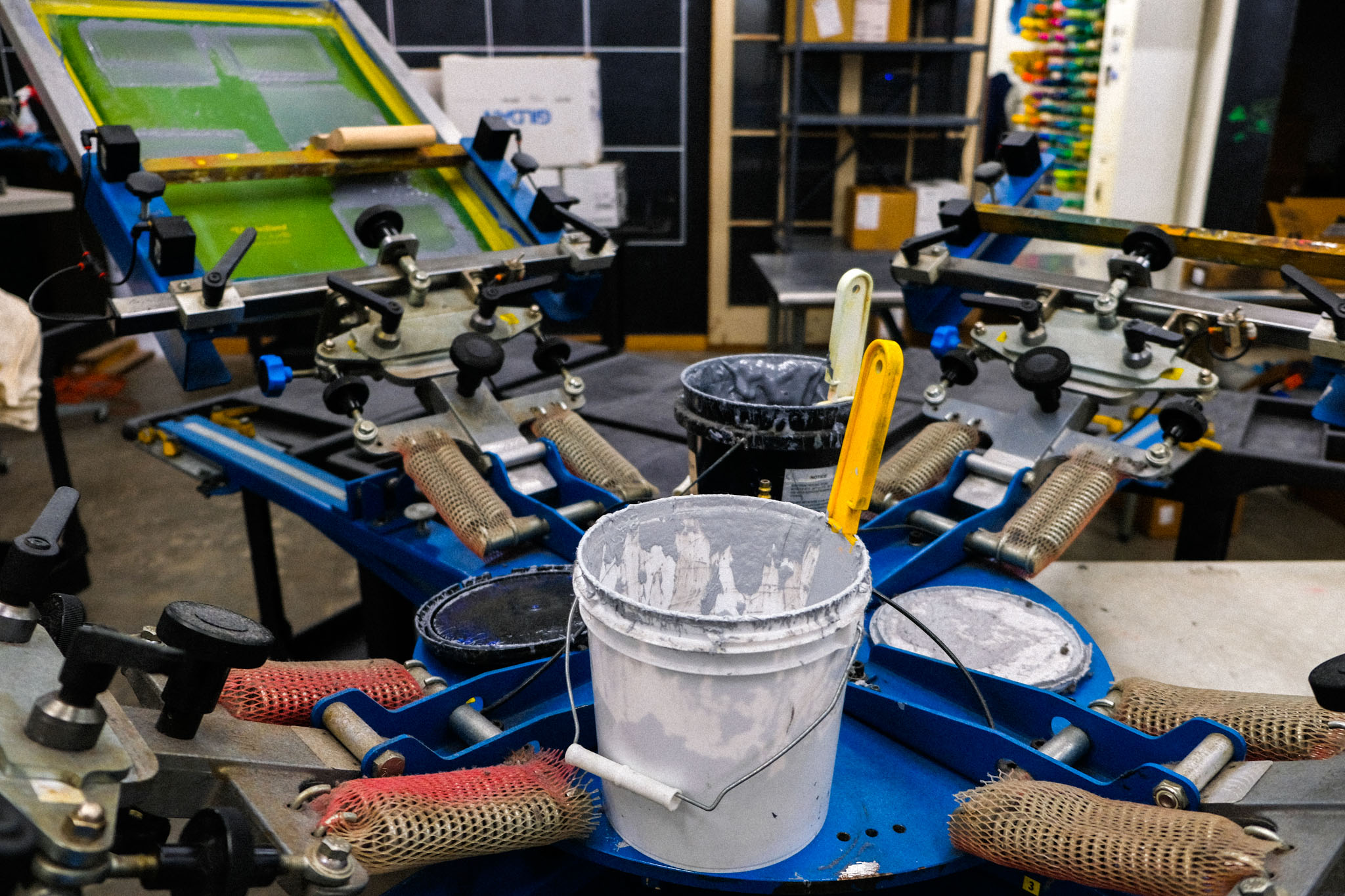Screen Printing Vs Direct-To-Garment Printing: A Cost Comparison (cost and quality)
Posted Nov 29th, 2022 | By TrinityGraphics
 ">
">
 ">
">
Screen printing and DTG (Direct-to-Garment) are both methods of printing personalized designs onto fabric. However, there are a few important differences between them depending on the kind of projects you have. If you’re considering what to use for your next T-shirt custom printing job, read on!
Screen Printing
Screen printing is a tried-and-true method for printing ink on textiles, garments and a variety of substrates. It is also known as silk-screening and commonly used for pre-press work when adding color, text, or images to a larger piece of artwork. The screen printing process involves applying light-sensitive emulsion to a nylon mesh, then printing an image onto the screen. A negative image is burned into the emulsion with a powerful light; this creates a hardened stencil. Screen printers then wash out the negative image, leaving openings in the mesh for ink to pass through for your custom design.
For businesses seeking high-quality and fast turnaround, screen printing is the way to go. From T-shirts, hats and other clothing items, this time-tested method of printing is farmed out to the highest bidder.

Direct-to-garment printing (DTG)
DTG printing’s rapid growth phase has made it one of the hottest trends in digital printing and apparel design. Popularized by consumer-specific brands such as Adidas, and Levi’s, DTG has come into its own in the print world.
Direct-to-garment printing (DTG) is a new way to print. It works similar to an inkjet printer, but uses a digital print head instead of an inkjet head. DTG printing is a faster and cheaper way for businesses to print on several types of materials like t-shirts, hoodies, and more.
Difference Between DTG Costs and Screen Printing Costs
Both DTG and screen printing have their advantages and disadvantages when it comes to costs. DTG is a great service for small batches with little to no up setup costs, especially with orders of 12 and below. When it comes to large quantities however, its slow process can accumulate costs even more and the durability of the prints cannot compare to that of silk screened. It also has its limitations on what material the designs can be printed on. Materials with less than 80% cotton, for example, cannot be easily printed using a DTG – making the process more expensive and difficult.
However, when it comes to creating vibrant and saturated printed apparel – screen printing is the way to be. Even with its initial hefty set up cost, it is more sustainable for larger quantities in a more timely and efficient manner. The durability of the ink is far superior to that of DTG and you’ll be sure to expect a faster turnaround with your orders.
Final Words
Screen printing vs. direct to garment (DTG) for t-shirt printing: Which is the best method? In short, it depends on your end goal. If you’re looking to start a t-shirt business at some point in the future, screen printing is probably the better choice. If you are looking to produce small runs of less than 36, or maybe even a single sample, DTG is going to serve you better.